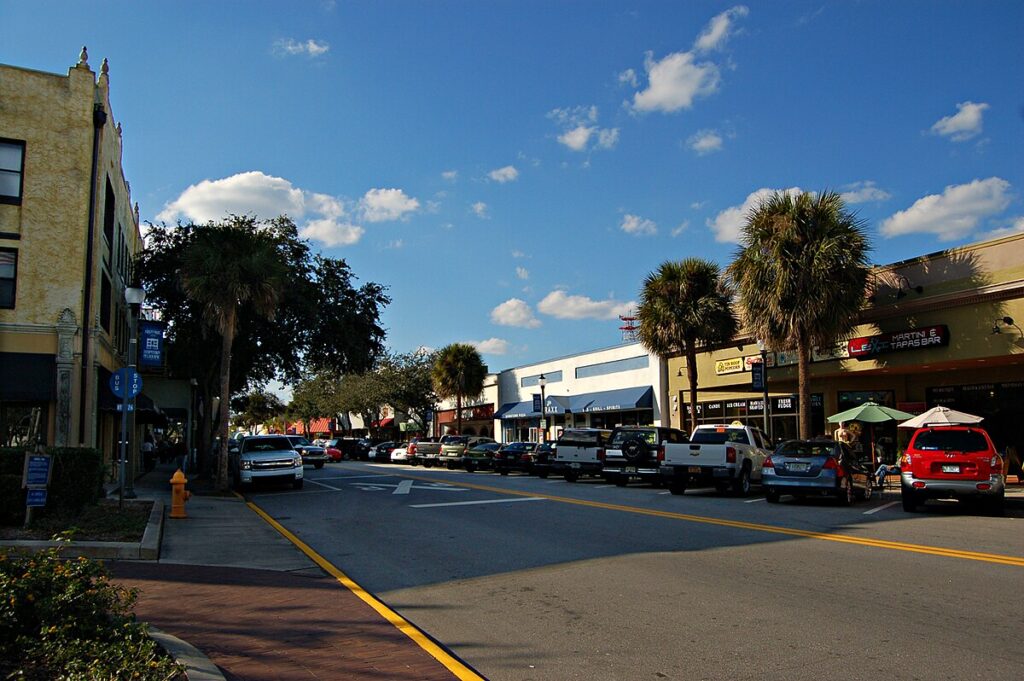
Moving to Melbourne, Florida: A Comprehensive Relocation Guide
Considering moving to Melbourne, Florida? This Space Coast city offers technology employment, beaches, and convenient location. With approximately 87,000 residents in 2025, Melbourne combines aerospace industry heritage with coastal living and Central Florida’s East Coast lifestyle.
Demographic Profile to Consider If Moving to Melbourne:
Melbourne’s 2025 population is approximately 87,000 residents in this Brevard County city along the Indian River Lagoon. The median age is around 43 years, with diverse households including families, aerospace professionals, retirees, and military personnel. The population is approximately 68% White, 18% Black or African American, 10% Hispanic. Melbourne features neighborhoods from historic downtown along New Haven Avenue to beachside communities across the lagoon to suburban developments inland. The city’s aerospace and technology heritage, driven by proximity to Kennedy Space Center and Patrick Space Force Base, influences community character. Melbourne attracts engineers, scientists, and professionals in technology fields. The city balances professional employment with beach town atmosphere. Find trusted local services for moving, living, and working in Melbourne.Melbourne Relocation Directory
Cost of Living to Consider If Moving to Melbourne:
Melbourne offers moderate housing costs for Florida’s Atlantic Coast. Median home values range from $320,000 to $420,000 in 2025, with beachside properties commanding higher prices. The median household income is approximately $63,000. Rental properties average $1,600 to $2,200 monthly. Florida’s lack of state income tax benefits residents. Overall cost of living is competitive for East Coast beach access, with Melbourne providing value compared to South Florida while offering similar Atlantic Ocean proximity. The city attracts aerospace professionals, military families, and retirees seeking affordable coastal living with technology employment opportunities. Housing costs vary significantly from beachside to inland neighborhoods.
Economy and Job Market:
Melbourne’s economy centers on aerospace, defense, technology, and healthcare. Major employers include Northrop Grumman, L3Harris Technologies, Collins Aerospace, and other defense contractors supporting Kennedy Space Center and military operations. Patrick Space Force Base provides military and civilian employment. Health First hospital system offers extensive healthcare jobs. Florida Institute of Technology employs educators and researchers. The city hosts technology companies and engineering firms. Many residents work in aerospace, defense, engineering, and technology sectors. The broader Space Coast economy revolves around space industry and military installations. Retail and service sectors support the population. The aerospace focus creates high-skilled employment opportunities. Typical commute times are short given the city’s size and local employment concentration.
Education:
Brevard County Public Schools serves Melbourne students with numerous schools including Melbourne High School, Eau Gallie High School, and various elementary and middle schools. The district serves the entire Space Coast. Florida Institute of Technology is a private research university in Melbourne specializing in engineering, science, and technology programs. Eastern Florida State College provides associate degrees and workforce training. The concentration of aerospace and technology industries creates emphasis on STEM education. The school district serves diverse populations across the Space Coast adequately.
Recreation and Lifestyle:
Melbourne offers Atlantic Ocean beaches on the barrier island with Melbourne Beach and Indialantic providing surfing, swimming, and beach activities. Historic downtown Melbourne features restaurants, shops, and the Henegar Center for the Arts. The city maintains extensive parks including Wickham Park with sports facilities, playgrounds, and water park. The Indian River Lagoon provides fishing, boating, and manatee viewing. Residents enjoy the Sebastian Inlet State Park for fishing and surfing nearby. The Brevard Zoo offers family entertainment. Space Coast proximity provides access to Kennedy Space Center Visitor Complex. Professional baseball spring training attracts fans. The lifestyle combines beach activities with aerospace community character. The subtropical climate enables year-round outdoor recreation. The community values science, technology, and space exploration heritage.
Healthcare and Services:
Melbourne residents access comprehensive healthcare through Health First’s Holmes Regional Medical Center and Melbourne Regional Medical Center providing full-service hospital care. Steward Health Care operates facilities throughout Brevard County. Numerous medical offices and specialists serve the area. The region’s healthcare infrastructure adequately serves the Space Coast population.
Transportation:
Melbourne benefits from Interstate 95, U.S. Highway 1, and Eau Gallie Boulevard as primary corridors. Melbourne Orlando International Airport provides regional flights. Orlando International Airport is approximately 70 minutes west. Space Coast Area Transit operates bus routes throughout Melbourne and Brevard County. Most residents use personal vehicles. The beachside area requires crossing causeways over the Indian River Lagoon. Typical commute times are short for local employment, with some residents commuting to Kennedy Space Center or Orlando.
Conclusion:
Moving to Melbourne in 2025 offers Space Coast living with aerospace employment, Atlantic beaches, and technology community. The city’s combination of defense industry jobs, coastal access, and affordable housing compared to South Florida makes it ideal for engineers, military families, and professionals seeking Florida’s East Coast lifestyle with high-tech employment opportunities.

